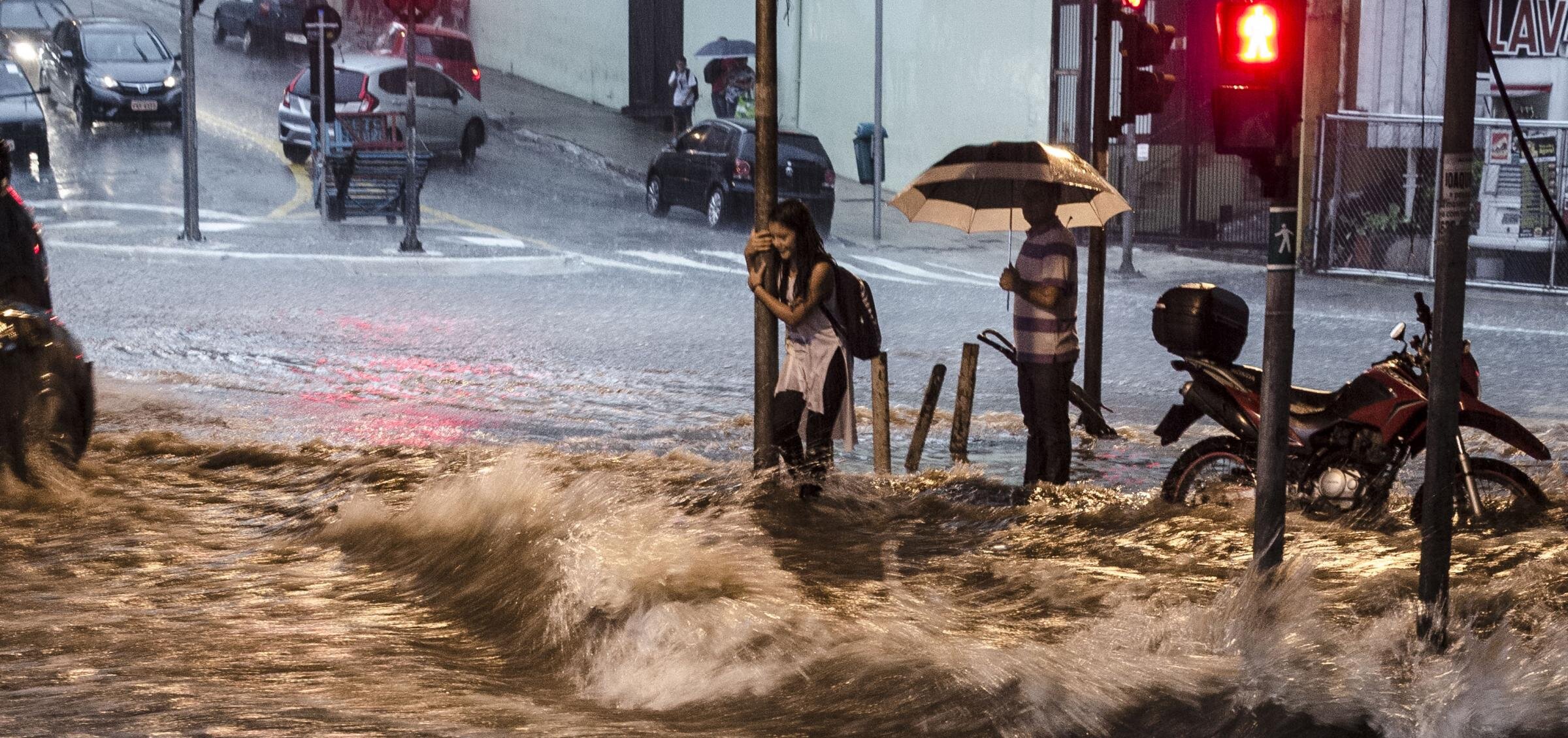
Under Water
How Rising Waters Cost Us All
An Investigative Report By: Heather Krause, Chief Data Scientist, Email
SCIENCE AND ACADEMIC RESEARCH BEHIND UNDER WATER
Orb Media global stories are based on careful use of emerging science and data analysis. The science behind Under Water is a great example of finding human meaning in science. Many of the ideas and concepts in our story come from the peer-reviewed research and leading academic thinkers and practitioners in the fields of climate science, economics, sociology, and human ecology, which is the study of humans and their environment.
Under Water shows how big and complex phenomena such as the world climate and the global economy are connected in a very concrete manner to people’s everyday lives. We share stories of how humans and societies around the globe experience similar consequences and challenges while adjusting to the new weather reality. As both climate and economy are complex, we are careful to be precise and to avoid simplifying or claiming causality when none is proven.
Flooding has always happened, and there have always been financial costs to individuals and societies following the damage created by the water. But in recent years, severe flooding has increased(1) and these floods are doing more damage(2), especially in densely populated areas.
While the exact magnitude and frequency of future floods are uncertain, there is good evidence that they will continue to be an issue.(3) This uncertainty is partly because information about the future evolution of climate change is uncertain but also because of other confounding factors, including urbanization and other manmade changes to our environment.(4)
Complex causes of flooding, including climate change and water cycle acceleration
The drivers of increasingly severe and damaging floods include climate change and sea level rise, an accelerated water cycle,(5) and increased coastal urbanization particularly into locations with outdated infrastructure. The ice is melting faster than expected,(6) which results in more water(7) in the global system. J. Marshall Shepherd, director for Program in Atmospheric Sciences at the University of Georgia, says: “It’s really a three-part equation that leads to urban flooding. We’re seeing an increase in urbanization, which is altering the water cycle by reducing infiltration into the soil and increasing the amount of runoff. Secondly, because of the increased runoff, you have more water flowing into rivers and streams. And thirdly, in cities like Toronto and New York, the storm water removal design is not prepared for the kind of water that it’s getting.”
The ice is melting faster than expected,(8) which results in more water(9) in the global system.
Flooding costs money for people directly affected and for people living far away. The ripple effects on the economy are widespread.
“Of all the different natural hazards, floods seem to be, on average, the type of natural disaster which causes the most damage to life and development gains,” said Upmanu Lall, director of the Columbia Water Center at Columbia University. Floods have immediately observable impacts on the places being flooded. However, the economic costs of these floods are quite large(10) and ripple out to impact the economics of communities far away from the floods.(11) “It’s not just a coastal problem. It’s an everybody problem, because it’s a connected economy.” Says Amir Jina, assistant professor at the Harris School of Public Policy, University of Chicago. Worldwide, floods are one of the most frequent forms of disaster(12) and flood losses(13) are expected to increase in frequency and severity in the future due to a combination of socio-economic development and climate change. Economists now expect the cost of flooding to be higher,(14) than previous studies have suggested.
Flooding is having an impact on people in ways beyond merely economic
In addition to economic impacts, flood disasters severely impact(15) human subjective well-being, health and productivity. Living in a flooded community also reduces the well-being of a respondent(16) even when they themselves have not been flooded. Social impacts of flooding have been shown(17) to include stress, anxiety, depression and mental health deterioration.
Our story looks at seven examples of costs of flooding in an interconnected world
Our story includes data points from seven locations. We have chosen these seven locations because they have all experienced recent flooding. It is not always possible to determine exactly which floods are the worst or have the biggest effects or even why exactly a flood has been so devastating. Each of these locations was severely impacted by recent floods and these impacts have rippled out through our shared world. We have tried to show how flooding and its consequences are global - hitting poor and rich countries, poor and rich people, and impacting those actually wet and those still dry. Floods and their effects are felt by different societies and individuals in unique ways. These are some examples of those ways.
Sao Paulo, Brazil lost an estimated $193 million USD due to recent floods and the ripple effect caused the entire country to lose as much as $1.4 billion USD.(18,19)
Tomato prices across the USA more than doubled in the three months after the flooding in Immokalee, United States in 2017.(20,21)
A collaborative project to build infrastructure to protect Hamburg, Germany from flood damage will cost German taxpayers approximately € 1.3 billion, in addition to private contributions, through investment in construction projects, in the range of € 5 to 5.5 billion.(22)
Airports are disproportionately vulnerable to sea level rise, partly because they are often built close to the coastline. The Cochin International Airport in Kerala, India closed for 15 days after flooding in 2018. The estimated cost was 2 billion rupees/27 million US$.(23,24)
People whose houses were flooded in Toronto, Canada, in 2014 lost seven days of work on average, costing them at least $1,500 USD or up to 3% of their expected annual income.(25)
Bangladesh is one of the world’s largest sources of climate change refugees. The average cost to an individual to migrate internationally to a new place of residence currently stands at $2,600 to $3,900, which amounts to three years’ worth of income for the average Bangladeshi. Climate change refugees will likely require 1.4 million new jobs and 470,000 residences in their new locations.(26)
Flooding in Lagos, Nigeria has inflicted significant costs on local fishing households. The majority (81%) of fishing families reported loss of income from floods, and the average income dropped by as much as 50%.(27)
